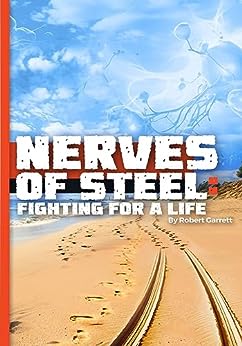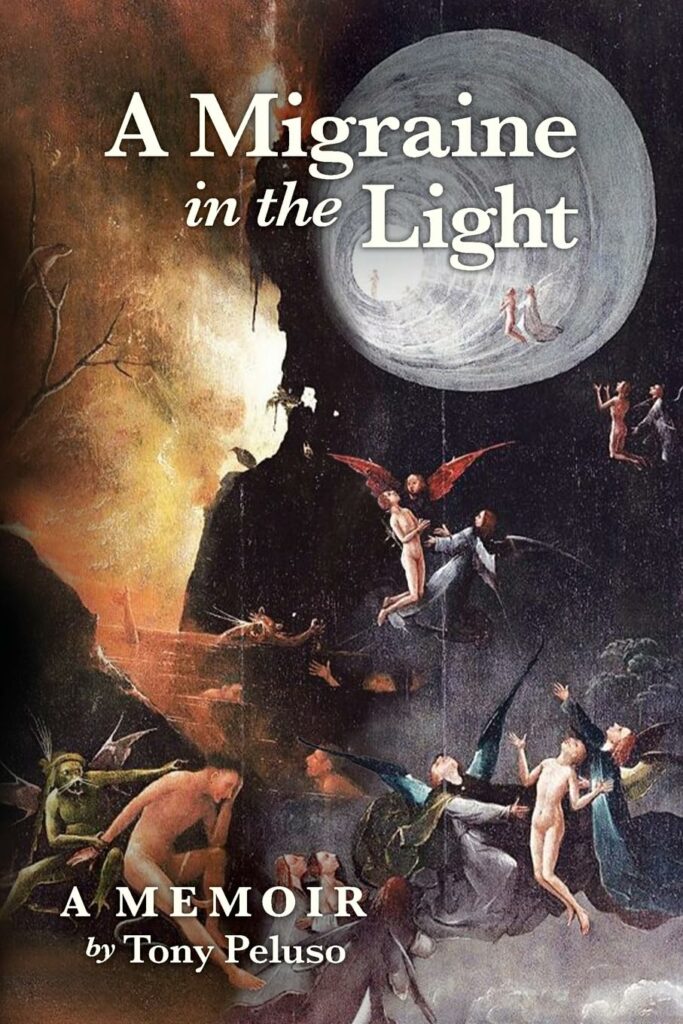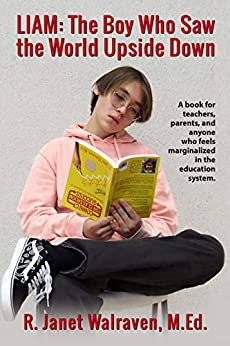
“You have ALS.” Three words obliterated the path of a life.
Now a new route was under construction and at the end sat a monstrous, relentless steamroller on a direct collision course.
“How long do I have? When will this hit me? What about my family?”
“Am I brave enough?”
Those are the devastating questions author Robert Garrett had to begin to answer the moment he was diagnosed with ALS while in his strong and thriving early 40s. He had a loving marriage, two healthy, beautiful young boys, and the career he had worked so hard for 20 years to achieve.
Now Garrett had to begin this new journey — one filled with devastating trials and exhilarating triumphs – while, as if blindfolded, he navigated the physical, emotional, and psychological obstacles of dealing with a ruthless terminal illness as his body began dying out from under him.
Written solely with dictation and eye gaze technology, Nerves of Steel is also a journey of self-discovery, as Garrett learns to overcome nearly impossible obstacles and try to somehow push through all of this with his family and sanity intact. It’s an intimate look at a real life: raw, honest, dark, uplifting, and inspiring with a cannonball splash of humor Garrett refuses to lose.
Amazon Purchase Link

I received a complimentary copy of this book from Reedsy Discovery. I voluntarily chose to read and post an honest review.
ALS, or amyotrophic lateral sclerosis, is a progressive neurodegenerative disease affecting brain and spinal cord nerve cells. It’s the boogyman that no one wants to face. Unfortunately for Robert, he has to face the monster head-on. ASL strips away a person’s strength and functions by interrupting the signals between nerves and muscles. When it does this, your muscles wither and die. As the disease progresses, the afflicted become more dependent on others until the condition takes away a person’s last breath. That’s a horrifying thought – knowing life will never be the same, thanks to the incurable disease.
Robert first noticed something was amiss when his left hand began cramping and taking a claw-like shape. His left bicep was also losing muscle mass. He was subjected to multiple MRIs, underwent a nerve conduction test, and an EMG (electromyography), spinal tap (lumbar puncture), and had a chunk of his peroneal nerve (branch of the sciatic nerve that supplies movement and sensation to the lower leg, foot, and toes) removed for testing. With each test, Robert hoped his greatest fear wouldn’t become a reality; he didn’t want the diagnosis of ALS. No one does. Robert’s reaction to the diagnosis broke my heart. I cried with him. I looked at my kids and wondered how they would handle the news he had to share with his young sons. Despite every painful moment Robert has endured, the stares from strangers, he didn’t want to miss a moment with his family. Before ALS, he was an active family man. With ALS, he didn’t want the debilitating illness to take any more from him and his family than it already has and will in the future.
Robert is lucky; he’s surrounded by family, friends, and co-workers that only want to improve his quality of life. No one could ask for a better mother-in-law than Janice. A widow, she moved into their apartment/basement and runs the house while Erin works full-time. She cooks, shops, cares for her grandsons (Walter and Henry), and helps Robert as needed. Then there was Carissa, a mother of four, who gave him unlimited access to her American Express for rides to work. Robert’s job also helped make his work life more manageable and graciously sponsors an annual 5k in his honor. The list of “angels” is long, so please read the book to discover how each act of kindness changed his life for the better.
Robert appreciates and acknowledges many people who have helped or are helping him today. Nurses. Friends. Family. He makes it a point to show his gratitude. No one can deny he loves his family and being a dad. While I was touched by his “wants” for his sons, nothing moved me as much as chapter 36. It was a list of things he missed doing. Hugging his wife and kids…tossing a frisbee…eating with chopsticks…licking chip dust off fingers…holding a remote…This is only a small fraction of the items on the list that’ll break your heart and leave you emotionally drained.
Robert has ALS, but he wants you to remember that he had a life before the disease, which he shares. He also wants you, the reader, to know he is still fighting. He still has wants to fulfill, and I hope he achieves each one, especially his dream ” to be standing tall and strong, wrapping my arms around my family in a tight hug.”
ASL is a brutal disease that only knows how to destroy a body without caring about how its actions affect a person’s mental, physical, and emotional state. Robert’s story will inspire other sufferers to fight back, love those around them, and make every moment count.
I have nothing but love and respect for Robert and his story. He made me laugh. He made me cry, A LOT. I was in awe of his strength. I recommend you read his life’s journey.
Heart Rating System:
1 (lowest) and 5 (highest)
Score: ❤❤❤❤❤
Amazon Purchase Link
Meet the Author

Robert Garrett grew up on the Space Coast in the heyday of 80s Hair Metal, feathered hair, and the Space Shuttle. Writing found him in the offices of the Tampa Tribune, where he worked as a janitor. He spent the next seven years covering sports for the Tribune as well as other publications.
Reedsy Author Link

Like this:
Like Loading...















